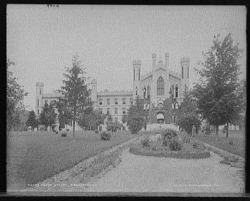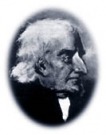The Mentally Ill
By: John
"The nineteenth century was a time of profound changes in the diagnosis and definition of mental illness, in the treatment and placement of those people categorized as mentally ill, and in the organization and professionalization of individuals caring for and treating the mentally ill"
Influential People and Treatment Methods

There were many influential people that helped the mentally ill get housed and receive treatment. I have researched 3 crucial figures that helped the mentally ill.
Philippe Pinel was a very intelligent French physician that transformed the treatment of the mentally ill. He thought that the environment was the main cause of insanity and mental illnesses. He also believed that these illnesses were curable. With this in mind, he changed the environment of the asylums; he did this by taking the ill out of their chains and chairs and letting them interact with one another and the environment around them. Also he treated the mentally ill by observing them through experiments. His reasoning behind these experiments was to discover the patterns of insanity and what caused the different states of mind in his patients. This treatment was called traitement moral aka moral treatment. His way of treatment opened the doors of treating the mentally ill to many others.
William Tuke was an English reformer who also changed the way that the mentally ill were cared for by treating the mentally ill like children. He disliked the use of restraints and harsh punishments as a way of controlling the inmates, like Pinel, instead he used threats and intimidation as ways of controlling them. He thought that the use of threats and intimidation would create beneficiary results. Tuke's open mind and patience led him to think that patients would recover given the time and opportunity. This use of patience and lengthy observations led to a higher percentage of patients being released as cured. Due to Pinel and Tuke's work, asylums were getting showered with legitimacy.
Samuel B. Woodward was a very influential figure in helping mentally ill get housed and receive treatment. Massachusetts set up the first state institution for the mentally ill; it was the Worcester State Lunatic Hospital. It has an incredible rate of recovery, 82 to 91% were discharged as cure, and it was said that the success came from its first superintendent, Samuel B. Woodward. In this hospital, he showed his knowledge of moral and medical treatment and ensured folks that his hospital was going to be run by efficiency and discipline. He made a schedule for the patients so that they were always busy and working. He had them doing laundry, working in the kitchen, cleaning and helping one another. His theory behind keeping the patients busy was that it gave them the opportunity to experience a working society.
Dorothea Dix was another great figure in this movement and she and her movements are explained in full depth on the next page.
Asylums

Even though, those great reformers had different ideas and techniques, they all agreed that the mentally ill be removed from society and put into institutions that will help recover from their illnesses.
During the early 1800's, asylums were being built very quickly because of new treatment methods such as moral treatment. One Exception was that most of them were private asylums such as the Massachusetts General Hospital (the McLean Asylum), Bloomingdale Asylum, and the Connecticut Retreat for the Insane (later named the Hartford Retreat). All of these hospitals knew that in order for moral treatment to be effective, the size of the institution had to be kept under control. But the wealthy owners of the institutions wanted the poor mentally ill to be helped so they invited them in. These hospitals soon had financial issues and money became the only thing that matter. These hospitals became private hospitals for the mentally ill who could afford it.
But soon state governments started building public asylums and between 1825 and 1865 53 insane asylums were built. As these state asylums were being built, more and more people started to flock to them. Moral treatment was their treatment method and it came with unfortunate consequences. With the amount of people increasing in the asylums, the effectiveness of moral treatment began to drop rapidly. These institution could not limit the amount of people unlike the private institutions. The staff of these institutions soon were outnumbered and could not properly treat patients. This problem of overpopulated asylums carried over into the twentieth century.
Another way asylums were differentiated was by how "bad" the patients mental illness was. There was two different diagnosis's of insanity or mental illness; one could have "acute" mental illness or "chronic" mental illness. These often would dictate your life. Acute illness's were often diagnosed, treated and discharged from the asylum within two years of being submitted. If an acute mental illness was not treated and cured by the end of two years, the patient would be reclassified as chronic insanity. At this point, a patient would either stay in the asylum or would be transferred to a chronic asylum. The chronic asylums did not offer much treatment and recovery rates were very low. By the end of the nineteenth century these asylums were overcrowded and the patients were often given up on.
As you will learn about on the next page, Dorothea Dix did so much for the building of proper housing of the mentally insane. She saw the conditions that the mentally ill had to go through in a Massachusetts jail and knew that something had to be done. So she went on country-wide campaigns and talked to state legislatures about building insane asylums. She has been credited for the building of 32 asylums.



